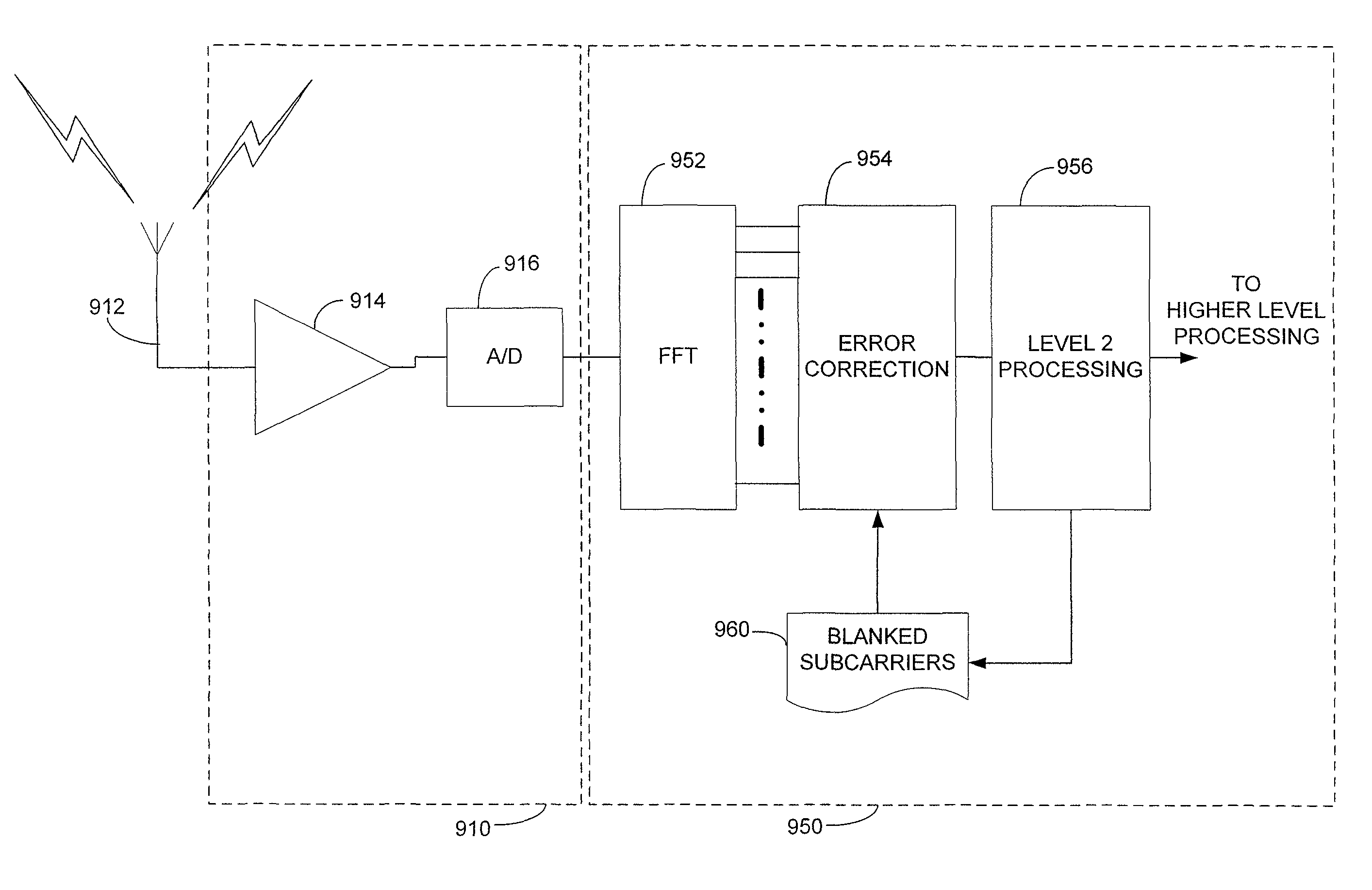Orthogonal frequency division multiple access with carrier sense
a carrier sense and orthogonal frequency technology, applied in the field of orthogonal frequency division multiple access with carrier sense, can solve the problems of inconvenient channel, interference between transmissions, and multiple computing devices present and transmitting wireless signals
- Summary
- Abstract
- Description
- Claims
- Application Information
AI Technical Summary
Benefits of technology
Problems solved by technology
Method used
Image
Examples
Embodiment Construction
[0028]The inventors have appreciated that wireless communications among computing devices may be improved through the use of information elements in network control messages to communicate information related to subcarrier usage. The information may be a subcarrier assignment, an identification of subcarriers in use by a device, information about capabilities of a device to communicate over one or more subcarriers, or other suitable information that may be used in selecting or communicating over subcarriers.
[0029]By providing a mechanism to communicate information relating to subcarrier usage, subcarrier assignment techniques that facilitate wireless communication may be implemented. One mechanism for making a subcarrier assignment may include sensing activity levels within a channel and using sensed activity levels on subcarriers in making subcarrier assignments. In some embodiments of the invention, activity levels are sensed using processing that includes listening and waiting a ...
PUM
 Login to View More
Login to View More Abstract
Description
Claims
Application Information
 Login to View More
Login to View More - R&D
- Intellectual Property
- Life Sciences
- Materials
- Tech Scout
- Unparalleled Data Quality
- Higher Quality Content
- 60% Fewer Hallucinations
Browse by: Latest US Patents, China's latest patents, Technical Efficacy Thesaurus, Application Domain, Technology Topic, Popular Technical Reports.
© 2025 PatSnap. All rights reserved.Legal|Privacy policy|Modern Slavery Act Transparency Statement|Sitemap|About US| Contact US: help@patsnap.com



